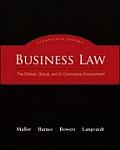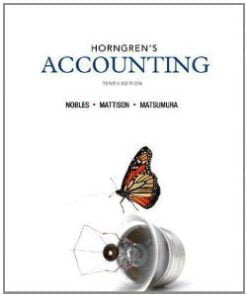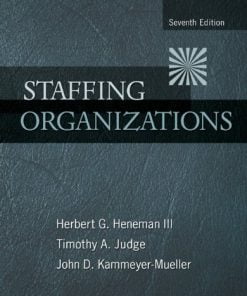Solution Manual for Cost Management Measuring Monitoring and Motivating Performance 2nd Edition by Eldenburg
$35.00 Original price was: $35.00.$26.50Current price is: $26.50.
Solution Manual for Cost Management Measuring Monitoring and Motivating Performance 2nd Edition by Eldenburg
This is completed downloadable of Solution Manual for Cost Management Measuring Monitoring and Motivating Performance 2nd Edition by Eldenburg

Product Details:
- ISBN-10 : 0470769424
- ISBN-13 : 978-0470769423
- Author: Leslie G. Eldenburg (Author), Susan K. Wolcott (Author)
Cost accounting has become an increasingly important tool for managers and accountants alike. The second edition helps them achieve professional success by bridging the gaps between knowledge, skills and abilities. It has been revised to focus on decision-making while still examining the procedural detail. It also emphasizes the analysis and application of concepts. Additional examples and illustrations draw comparisons between government and manufacturing. Real-world scenarios and ethical decision-making sections demonstrate how the material is applied. Accountants and managers will also view Excel spreadsheets to give them a better understanding of the material.
Table of Content:
- Chapter 1: The Role of Accounting Information in Management Decision Making
- MOTOROLA’S IRIDIUM PROJECT: LOOK BEFORE YOU LEAP
- STRATEGIC MANAGEMENT AND DECISION MAKING
- Organizational Vision
- Organizational Core Competencies
- Organizational Strategies
- Operating Plans
- Actual Operations
- Measuring, Monitoring, and Motivating Performance
- LEVERS OF CONTROL
- Belief Systems
- Boundary Systems
- Diagnostic Control Systems
- Interactive Systems
- COST ACCOUNTING AND STRATEGIC MANAGEMENT
- Management Accounting and Financial Accounting
- A Brief History of Cost Accounting
- Strategic Cost Management
- INFORMATION SYSTEMS AND STRATEGIC MANAGEMENT
- Internal and External Reports
- Improvements in Information for Management Decision Making
- Business Intelligence and Process Management Systems
- RELEVANT INFORMATION FOR DECISION MAKING
- Relevant and Irrelevant Cash Flows
- Relevance of Income Statement Information
- SNOW-BLADE SNOWBOARDS: IDENTIFYING RELEVANT COSTS
- Importance of Identifying Relevant Information
- BUSINESS RISK
- Risk Management
- Business Risk and Cost Management
- DECISION-MAKING BIASES
- RISK OF BIASED DECISIONS: Nonrational Escalation of Commitment
- QUALITY OF MANAGEMENT DECISION-MAKING
- ETHICAL DECISION MAKING
- Conflicting Interests
- Motive for Ethical Behavior
- FOCUS ON ETHICAL DECISION MAKING: Ethical Considerations in Outsourcing Decisions
- Reputation Effects of Suppliers’ Unethical Actions
- Analyzing the Ethics of a Decision
- APPENDIX 1A Steps for Better Thinking: A Decision-Making Process
- SUMMARY
- KEY TO SYMBOLS
- Self-Study Problems
- Key Terms
- QUESTIONS
- EXERCISES
- PROBLEMS
- MINI-CASES
- Chapter 2: The Cost Function
- FLYING LOW DURING AN ECONOMIC DOWNTURN
- IDENTIFYING RELEVANT COSTS FOR A DECISION
- Relevant Costs for a Cost Object
- Identifying Relevant Costs from the Accounting System
- Direct and Indirect Costs
- Opportunity Costs
- Sunk Costs
- COST BEHAVIOR
- Variable, Fixed, and Mixed Costs
- Classifying Costs
- Relevant Range
- Cost Functions
- Cost Driver
- Identifying Potential Cost Drivers
- No Apparent Cost Driver
- Discretionary Costs
- Economies of Scale
- FOCUS ON ETHICAL DECISION MAKING: Discretionary Costs
- Ethics and Pharmaceutical Advertising
- INFORMATION USED TO ESTIMATE COSTS
- COST ESTIMATION TECHNIQUES
- Engineered Estimate of Cost
- Analysis at the Account Level
- Scatter Plots
- Two-Point Method
- High-Low Method
- RISK OF BIASED DECISIONS: Insensitivity to Sample Size
- ESTIMATING THE COST FUNCTION
- SMALL ANIMAL CLINIC (PART 1): CREATING A COST FUNCTION
- Identify Relevant Costs and Obtain Information Needed for Estimation
- Categorize Costs, Apply Cost Estimation Techniques, and Estimate Future Costs
- Combine All Relevant Cost Estimates
- Estimating Profit
- REGRESSION ANALYSIS
- Simple Regression Analysis
- Interpreting Simple Regression Results
- SMALL ANIMAL CLINIC (PART 2): TWO-POINT METHOD AND REGRESSION ANALYSIS
- Revised Analysis of the Treatment Supplies Cost
- Quarterly Data
- Scatter Plots
- Two-Point Method
- Simple Regression Analysis
- Revised Cost Estimate
- Review of Methods, Total Cost Function
- STRATEGIC RISK MANAGEMENT: Small Animal Clinic (Part 2)
- Cost Estimation Accuracy and Strategies
- USES AND LIMITATIONS OF COST ESTIMATES
- Cost Estimation and Managerial Decision Making
- Common Errors in Estimating Relevant Costs
- Quality of Estimation Techniques
- Reliance on Cost Estimates
- APPENDIX 2A REGRESSION ANALYSIS-ADDITIONAL TOPICS
- MULTIPLE REGRESSION ANALYSIS
- Choosing Cost Drivers for Multiple Regression
- PRINT MASTERS PRINT SHOP: USING MULTIPLE REGRESSION TO ESTIMATE A COST FUNCTION
- Scatter Plots and Simple Regression Results
- Multiple Regression Analysis
- REGRESSION ANALYSIS ASSUMPTIONS
- ADDITIONAL REGRESSION ANALYSIS CONSIDERATIONS
- Stepwise Linear Fixed Costs
- Piecewise Linear Variable Costs
- Data Limitations
- APPENDIX 2B: Learning Curves
- SUMMARY
- KEY TO SYMBOLS
- Self-Study Problems
- Key Terms
- QUESTIONS
- EXERCISES
- PROBLEMS
- MINI-CASES
- Chapter 3: Cost-Volume-Profit Analysis
- WIRED OR WIRELESS: ADJUSTING TO NEW MARKETS
- COST-VOLUME-PROFIT ANALYSIS
- Profit Equation and Contribution Margin
- CVP Analysis in Units
- CVP Analysis in Revenues
- CVP for Multiple Products
- Breakeven Point
- Cost-Volume-Profit Graph
- CVP with Income Taxes
- DIE GEFLECKTE KUH EIS (THE SPOTTED COW CREAMERY) (PART 1): CVP ANALYSIS WITH INCOME TAXES
- Estimating the Cost Function
- Estimating After-Tax Profit
- Calculating Revenues to Achieve Targeted After-Tax Profit
- RISK OF BIASED DECISIONS: Optimism Bias
- PERFORMING CVP ANALYSES WITH A SPREADSHEET
- CVP Calculations for a Sales Mix
- CVP Sensitivity Analysis
- Discretionary Expenditure Decision
- Planning, Monitoring, and Motivating with CVP
- DIE GEFLECKTE KUH EIS (THE SPOTTED COW CREAMERY) (PART 2): THE INFLUENCE OF SALES MIX ON PROFITABILI
- STRATEGIC RISK MANAGEMENT: Spotted Cow Creamery (Part 2)
- ASSUMPTIONS AND LIMITATIONS OF COST-VOLUME-PROFIT ANALYSIS
- Business Risk and Quality of Input Data
- Quality of CVP Technique
- CVP for Nonprofit Organizations
- SMALL ANIMAL CLINIC: NOT-FOR-PROFIT ORGANIZATION CVP ANALYSIS WITH TWO RELEVANT RANGES
- Breakeven Compared to Budget
- Potential Investment in New Equipment
- Calculating and Analyzing Targeted Activity Level
- CVP Adjusted for Change in Relevant Range
- MARGIN OF SAFETY AND DEGREE OF OPERATING LEVERAGE
- Margin of Safety
- Degree of Operating Leverage
- Using the Degree of Operating Leverage to Plan and Monitor Operations
- FOCUS ON ETHICAL DECISION MAKING: Temporary Labor
- Ethics and Temporary Labor
- SUMMARY
- KEY TO SYMBOLS
- Self-Study Problems
- Key Terms
- QUESTIONS
- EXERCISES
- PROBLEMS
- MINI-CASES
- Chapter 4: Relevant Information for Decision Making
- INTERNATIONAL OUTSOURCING: THE GOOD, THE BAD, AND THE CONTROVERSIAL
- RELEVANT INFORMATION FOR DECISION MAKING
- Process for Identifying and Analyzing Relevant Information
- Operating Decision Examples
- SPECIAL ORDERS
- Quantitative Rule for Special Order Decisions
- BARKLEY BASKETBALLS: SPECIAL ORDER
- Quantitative Analysis
- Qualitative Analysis
- Strategic Prioritization
- STRATEGIC RISK MANAGEMENT: Barkley Basketballs
- Special Orders and Pricing Policies
- Qualitative and Risk Factors for Special Order Decisions
- KEEP OR DROP DECISIONS
- Quantitative Rule for Product and Business Segment Keep or Drop Decisions
- HOME AIDE SERVICES: KEEP OR DROP
- Quantitative Analysis
- Qualitative Analysis
- Strategic Prioritization
- STRATEGIC RISK MANAGEMENT: Home Aide Services
- The Business Risk of Dropping a Product
- Customer Profitability
- RISK OF BIASED DECISIONS: Confirmation Bias
- Costs of Carrying Inventory
- Qualitative and Risk Factors for Keep or Drop Decisions
- INSOURCE OR OUTSOURCE (MAKE OR BUY) DECISIONS
- Quantitative Rule for Insource or Outsource Decisions
- ROADRUNNER PUBLISHERS (PART 1): INSOURCE OR OUTSOURCE
- Quantitative Analysis
- Qualitative Analysis
- Strategic Prioritization
- Qualitative and Risk Factors for Outsourcing Decisions
- FOCUS ON ETHICAL DECISION MAKING: Offshoring Surgery
- The Ethics of International Medical Outsourcing
- PRODUCT EMPHASIS DECISIONS
- Quantitative Rule for Product Emphasis Decisions
- Theory of Constraints and Constrained Resources
- Quantitative Rule for Choosing the Product Mix When Resources Are Constrained
- Quantitative Rule for Relaxing Constraints for One or Two Products
- ROADRUNNER PUBLISHERS (PART 2): CONSTRAINED RESOURCE
- Qualitative Analysis
- Quantitative Analysis
- Strategic Prioritization
- STRATEGIC RISK MANAGEMENT: Roadrunner Publishers (Part 2)
- Reducing the Risk of Lost Sales
- PRODUCT EMPHASIS: MULTIPLE RESOURCE CONSTRAINTS AND MULTIPLE PRODUCTS
- Quantitative Rule for Maximizing Contribution Margin with Multiple Constraints and Multiple Products
- BERTRAM GOLF CARTS: MULTIPLE CAPACITY CONSTRAINTS AND MULTIPLE PRODUCTS
- STRATEGIC RISK MANAGEMENT: Bertram Golf Carts
- Risky Assumptions
- METHODS FOR RELAXING CONSTRAINTS
- Use Constrained Resources More Efficiently
- Increase Available Resources
- Qualitative and Risk Factors for Product Emphasis and Constrained Resource Problems
- QUALITY OF OPERATING DECISIONS
- Quality of Information
- Strategic Alignment
- Decision-Maker Bias
- Opportunity Costs
- ROADRUNNER PUBLISHERS (PART 3): INSOURCE OR OUTSOURCE WITH OPPORTUNITY COSTS
- Business Risk and Sensitivity Analysis
- Control System Incentive and Behavioral Effects
- Appendix 4A: Using Excel Solver for Product Emphasis and Constrained Resource Decisions
- 1. Determine the Objective (Target) Function
- 2. Create Constraint Functions
- 3. Set Up an Excel Spreadsheet
- 4. Use Excel Solver to Maximize the Objective Function
- 5. Interpret the Solver Output
- SUMMARY
- KEY TO SYMBOLS
- Self-Study Problem
- Key Terms
- QUESTIONS
- EXERCISES
- PROBLEMS
- MINI-CASES
- Chapter 5: Job Costing
- BOMBARDIER: CUSTOM MANUFACTURING
- ASSIGNING PRODUCT COSTS TO INDIVIDUAL GOODS OR SERVICES
- Product Costs
- Process Costing
- Job Costing
- JOB COSTING IN MANUFACTURING
- Assigning Direct Costs
- Computerized and Manual Job Costing Systems
- ALLOCATING OVERHEAD
- Actual and Normal Costing
- ALUMINUM BENDERS (PART 1): ALLOCATING OVERHEAD COSTS IN JOB COSTING
- Evaluating Overhead Cost Pools and Allocation Bases
- Understanding the Overhead Cost Allocation Method
- GENERAL LEDGER ENTRIES FOR A MANUFACTURER
- Overapplied and Underapplied Overhead
- SERVICE SECTOR JOB COSTING
- NIGHTHAWK, LLP: JOB COSTING IN A LAW FIRM
- Estimated Job Costs and Price
- Competitor’s Job Costs and Price
- Monitoring Job Costs
- STRATEGIC RISK MANAGEMENT: Nighthawk, LLP
- Relevance of Fixed Costs
- JOB COST INFORMATION, DECISIONMAKING, AND INCENTIVES
- Allocated Overhead Costs and Decision Making
- ALUMINUM BENDERS (PART 2): JOB COSTS RELEVANT FOR DECISION MAKING
- Qualitative Factors
- Judgment and Uncertainties in Job Costing System Design
- Measuring Job Costs for Diagnostic Control
- Allocated Overhead and Relevant Costs
- RISK OF BIASED DECISIONS: Hindsight Bias
- FOCUS ON ETHICAL DECISION MAKING: Overbilling Clients for Expenses
- Tracing Rebates and Discounts Directly to Jobs
- SPOILAGE, REWORK, AND SCRAP IN JOB COSTING
- Normal and Abnormal Spoilage
- ALUMINUM BENDERS (PART 3): ASSIGNING SPOILAGE COSTS
- Rework
- Scrap
- PRODUCTION QUALITY AND BEHAVIOR IMPLICATIONS
- Spoilage Opportunity Costs
- Investing in Quality
- Effect of Accounting on Manager Behavior
- External Monitoring
- SUMMARY
- KEY TO SYMBOLS
- Self-Study Problems
- Key Terms
- QUESTIONS
- EXERCISES
- PROBLEMS
- MINI-CASES
- Chapter 6: Process Costing
- NESTLÉ: BOTTLING WATER IN TENNESSEE
- ACCOUNTING FOR THE COST OF MASS-PRODUCED GOODS
- Assigning Direct Materials and Conversion Costs
- Work in Process and Equivalent Units
- PROCESS COSTING METHODS
- Detailed Example
- RISK OF BIASED DECISIONS: Lake Wobegon Effect
- GENERAL LEDGER ACCOUNTS FOR PROCESS COSTING
- PREMIER PLASTICS (PART 1): CHOOSING A PROCESS COSTING METHOD
- Weighted Average and FIFO Process Cost Reports
- Comparison of Weighted Average and FIFO
- FOCUS ON ETHICAL DECISION MAKING: Humane Treatment of Chickens
- The Ethics of Production Methods
- PROCESS COSTING UNDER DIFFERENT ASSUMPTIONS
- Direct Materials Added During the Process
- Nonuniform Conversion Costs and Multiple Cost Pools
- Costs Transferred from Another Department
- PREMIER PLASTICS (PART 2): COSTS TRANSFERRED FROM ANOTHER DEPARTMENT AND DIRECT MATERIALS ADDED LATE
- ALTERNATIVE SYSTEMS FOR COSTING MASS PRODUCTION
- Standard Costing
- Just-in-Time and Long-Term Procurement Contracts
- Hybrid Costing Systems and Operation Costing
- ACCOUNTING FOR SPOILAGE IN PROCESS COSTING
- PREMIER PLASTICS (PART 3): FIFO COST REPORT WITH NORMAL AND ABNORMAL SPOILAGE
- FIFO Process Cost Report and Journal Entries with Spoilage
- Using Spoilage Cost Information
- STRATEGIC RISK MANAGEMENT: Premier Plastics (Part 3)
- Acceptability of Normal Spoilage
- Quality-Related Costs
- PROCESS COST INFORMATION AND MANAGER’S INCENTIVES AND DECISIONS
- Diagnostic Control of Process Quality and Costs
- Process Costing Information and Decision Making
- Mismeasurement of Cost Flows
- Work in Process Units at Different Stages of Completion
- SUMMARY
- KEY TO SYMBOLS
- Self-Study Problem
- Key Terms
- QUESTIONS
- EXERCISES
- PROBLEMS
- MINI-CASES
- Chapter 7: Multi-Pool, Multi-Driver Costing Methods
- SUN LIFE: ANALYZING THE COST OF CLAIMS PROCESSING
- ACTIVITY-BASED COSTING (ABC)
- Traditional Cost Accounting Systems
- Activity-Based Costing Systems
- ABC COST HIERARCHY
- Organization-Sustaining Activities
- Facility-Sustaining Activities
- Customer-Sustaining Activities
- Product-Sustaining Activities
- Batch-Level Activities
- Unit-Level Activities
- ASSIGNING COSTS USING AN ABC SYSTEM
- 1. Identify the Relevant Cost Object
- 2. Identify Activities
- 3. Assign Costs to Activity-Based Cost Pools
- 4. For Each ABC Cost Pool, Choose a Cost Driver
- 5. For Each ABC Cost Pool, Calculate an Allocation Rate
- 6. For Each ABC Cost Pool, Allocate Activity Costs to the Cost Object
- KEENER DOORS AND WINDOWS (PART 1): COMPARISON OF ABC AND TRADITIONAL JOB COSTING
- Product Costs Using Job Costing
- Product Costs Using ABC
- Using ABC Product Cost Information
- STRATEGIC RISK MANAGEMENT: Keener Doors and Windows (Part 1)
- Product Cost Information Bias
- ABC IN SERVICE ORGANIZATIONS
- ACTIVITY-BASED MANAGEMENT
- Managing Customer Profitability
- Managing Product and Process Design
- KEENER DOORS AND WINDOWS (PART 2): CUSTOMER PROFITABILITY ANALYSIS, WARRANTY COST ANALYSIS, AND ABM
- Using ABC for Customer Profitability
- Using ABC for Warranty Costs
- Managing Environmental Costs
- Managing Quality
- Drawbacks of ABC
- SWISS WATCH: ABM AND THE COST OF QUALITY
- Estimating the Costs of Quality
- Using Quality Cost Information to Better Manage Operations
- STRATEGIC RISK MANAGEMENT: Swiss Watch
- Quality and Reputation
- Modified Versions of ABC
- FOCUS ON ETHICAL DECISION MAKING: Promoting Inappropriate Uses of ABC
- Ethics of Consultant Services
- OTHER MULTI-POOL, MULTI-DRIVER COST ACCOUNTING SYSTEMS
- Grenzplankostenrechnung (GPK)
- Resource Consumption Accounting (RCA)
- Cost Pool Calculations Under GPK and RCA
- Idle/Excess Capacity Analysis
- Multi-Level Income Statement
- Drawbacks of GPK and RCA
- RISK OF BIASED DECISIONS: Status Quo Bias
- MULTI-POOL, MULTI-DRIVER SYSTEMS, DECISION MAKING, AND INCENTIVES
- Benefits of ABC, GPK, and RCA Systems
- Costs of ABC, GPK, and RCA Systems
- SUMMARY
- KEY TO SYMBOLS
- Self-Study Problems
- Key Terms
- QUESTIONS
- EXERCISES
- PROBLEMS
- MINI-CASES
- Chapter 8: Measuring and Assigning Support Department Costs
- ALLOCATING SUPPORT DEPARTMENT COSTS IN SEATTLE
- SUPPORT DEPARTMENT COST ALLOCATION
- Objectives for Support Department Cost Allocation
- PROCESS FOR ALLOCATING SUPPORT DEPARTMENT COSTS
- Clarifying the Purpose
- Identifying Support and Operating Department Cost Pools
- Assigning Costs to Cost Pools and Choosing Allocation Bases
- Allocation Methods
- DIRECT METHOD
- MIDDLETOWN CHILDREN’S CLINIC (PART 1): DIRECT METHOD ALLOCATION
- Cost Object, Cost Pools, and Assigning Costs
- Choosing Allocation Bases
- Direct Method Calculations
- STEP-DOWN METHOD
- MIDDLETOWN CHILDREN’S CLINIC (PART 2): STEP-DOWN METHOD ALLOCATION
- RECIPROCAL METHOD
- MIDDLETOWN CHILDREN’S CLINIC (PART 3): RECIPROCAL METHOD ALLOCATION
- Allocating Support Costs Among Support Departments
- Allocating Support Costs to Operating Departments
- Comparing Results and Choosing an Allocation Method
- STRATEGIC RISK MANAGEMENT: Middletown Children’s Clinic (Part 3)
- Accuracy of Cost Measurement
- Comparing the Direct, Step-Down, and Reciprocal Methods
- SINGLE-VERSUS DUAL-RATE ALLOCATIONS
- MIDDLETOWN CHILDREN’S CLINIC (PART 4): DUAL RATES AND RECIPROCAL METHOD WITH THREE SUPPORT DEPARTM
- Charges Based on Single-Rate Allocation
- Analysis of Cost Behavior and Revision of Cost Pools
- Charges Based on Variable Cost Allocation
- Dual-Rate Allocation
- STRATEGIC RISK MANAGEMENT: Middletown Children’s Clinic (Part 4)
- Support Cost Allocations in a Diagnostic Control System
- SUPPORT COST ALLOCATIONS, DECISION MAKING, AND INCENTIVES
- Relevant Support Costs for Decision Making
- Support Department Allocations as Transfer Prices
- Setting Transfer Prices for Support Services
- Incentive Effects of Budgeted Versus Actual Rates
- Fairness and Allocation of Common Costs
- RISK OF BIASED DECISIONS: Fairness Bias
- Incentives Under Cost-Based Contracting
- FOCUS ON ETHICAL DECISION MAKING: Classifying Overhead Costs at Stanford University
- The Ethics of Accurate Cost Classification
- APPENDIX 8A: Using Solver to Calculate Simultaneous Equations for the Reciprocal Method
- SUMMARY
- KEY TO SYMBOLS
- Self-Study Problem
- Key Terms
- QUESTIONS
- EXERCISES
- PROBLEMS
- MINI-CASES
- Chapter 9: Joint Product and By-Product Costing
- HYPERION—TURNING WASTE INTO PROFIT
- JOINT PRODUCTS AND COSTS
- ALLOCATING JOINT COSTS
- Physical Output Method
- Sales Value at Split-Off Point Method
- Net Realizable Value Method
- Constant Gross Margin NRV Method
- CHOOSING AN APPROPRIATE JOINT COST ALLOCATION METHOD
- Pros and Cons of Alternative Allocation Methods
- MERRITT BROTHERS (PART 1): CHOOSING AN APPROPRIATE ALLOCATION METHOD
- PROCESSING A JOINT PRODUCT BEYOND THE SPLIT-OFF POINT
- MERRITT BROTHERS (PART 2): JOINT PRODUCT DECISION MAKING
- Quantitative and Qualitative Factors
- STRATEGIC RISK MANAGEMENT: Merritt Brothers (Part 2)
- Relevant Information for Product Line Decisions
- Judgment and Bias in Incremental Revenue and Cost Estimates
- RISK OF BIASED DECISIONS: Joint-Versus-Separate Preference Reversals
- JOINT PRODUCTS AND BY-PRODUCTS
- Accounting for By-Products
- Income Statement Effects of Recognizing By-Product Value at Time of Production Versus at Sale
- JOINT PRODUCT COSTING WITH A SALES MIX
- PREMIUM PINEAPPLE COMPANY JOINT PRODUCT COSTING WITH A SALES MIX
- Physical Output Method
- Sales Value at Split-Off Point Method
- Net Realizable Value Method
- Constant Gross Margin NRV Method
- Comparing Methods
- STRATEGIC RISK MANAGEMENT: Premium Pineapple Company
- JOINT COST ALLOCATIONS, DECISION MAKING, AND INCENTIVES
- Diagnostic Control of Joint Processes and Costs
- FOCUS ON ETHICAL DECISION MAKING: Hazardous Cement
- Ethics and Hazardous Waste
- SUMMARY
- KEY TO SYMBOLS
- Self-Study Problem
- Key Terms
- QUESTIONS
- EXERCISES
- PROBLEMS
- MINI-CASES
- Chapter 10: Static and Flexible Budgets
- PLANNING FOR A MOVING TARGET
- BUDGETS AND THE STRATEGIC MANAGEMENT PROCESS
- Budgets and Levers of Control
- MASTER BUDGET
- Developing a Master Budget
- Forecasting
- RISK OF BIASED DECISIONS: Recency Effect
- UNIQUE SINKS (PART 1): DEVELOPING A MASTER BUDGET
- Developing the Revenue Budget
- Developing the Production Budget
- Developing the Direct Materials and Direct Labor Budget
- Developing the Manufacturing Overhead Budget
- Developing the Budgeted Statement of Cost of Goods Manufactured and Sold
- Developing the Selling and Administration Budget
- Developing the Cash Receipts and Disbursements Budget
- Developing the Short-Term Financing Budget
- Developing the Budgeted Statement of Income and Retained Earnings
- Developing the Budgeted Balance Sheet
- Approving and Using the Master Budget
- STRATEGIC RISK MANAGEMENT: Unique Sinks (Part 1)
- Budgets as Controls
- Budget Assumptions and Business Risks
- Bias in Operational Planning
- Budgeting in Nonmanufacturing Organizations
- Budgeting in International Organizations
- FLEXIBLE BUDGETS
- Budget Sensitivity Analysis
- UNIQUE SINKS (PART 2): DEVELOPING AND USING A FLEXIBLE BUDGET
- Developing a Flexible Budget
- Flexible Budget Operating Income and Breakeven Point
- Flexible Budget Cash Receipts and Disbursements
- Using the Flexible Budget for Planning
- STRATEGIC RISK MANAGEMENT: Unique Sinks (Part 2)
- Flexible Budget and Quality of Information
- BUDGETS AS PERFORMANCE BENCHMARKS
- Budget Variances and Analyses
- UNIQUE SINKS (PART 3): DEVELOPING A VARIANCE REPORT
- Static Versus Flexible Budget Variances
- Relevant Variance Information
- STRATEGIC RISK MANAGEMENT: Unique Sinks (Part 3)
- Variances in a Diagnostic Control System
- Variances and the Degree of Business Risk
- PEOPLE: THE CENTER OF THE BUDGETING PROCESS
- Budget Responsibility and Performance Evaluation
- Participation in Budgeting
- Budget Manipulation
- Zero-Based Budgeting
- FOCUS ON ETHICAL DECISION MAKING: Timely Reporting of Budget Problems
- Budgets, Teamwork, and Ethics
- BEYOND TRADITIONAL BUDGETING
- Activity-Based Budgets
- GPK and RCA Budgets
- Beyond Budgeting: Relative Performance Evaluation
- Beyond Budgeting: Dynamic Forecasting (Rolling Budgets)
- Kaizen Budgets
- Technology and Budgeting
- SUMMARY
- KEY TO SYMBOLS
- Self-Study Problems
- Key Terms
- QUESTIONS
- EXERCISES
- PROBLEMS
- MINI-CASES
- Chapter 11: Standard Costs and Variance Analysis
- RESPONDING TO UNEXPECTED CHANGES IN RESOURCE SUPPLIES AND PRICES
- VARIANCE ANALYSIS AND THE STRATEGIC MANAGEMENT PROCESS
- Variance Analysis
- Variance Analysis in a Diagnostic Control System
- Behavior Implications of Variances in a Diagnostic Control System
- Variance Analysis in an Interactive Control System
- STANDARD COSTING
- Standard Costing System and Variances
- Standard Cost Categories
- Developing Standard Costs
- CEMENTOS JUAREZ (PART 1): SETTING STANDARD COSTS
- Setting Cost Standards
- Summary of Direct and Overhead Cost Standards
- Cost Budget
- RISK OF BIASED DECISIONS: Anchoring Trap
- STRATEGIC RISK MANAGEMENT: Cementos Juarez (Part 1)
- Standard Costs in a Diagnostic Control System
- DIRECT COST VARIANCES
- Price Variances
- Efficiency Variances
- Journal Entries for Direct Costs and Variances
- CEMENTOS JUAREZ (PART 2): VARIANCES FOR DIRECT MATERIALS AND DIRECT LABOR
- Direct Materials Price Variance
- Direct Labor Price Variance
- Direct Materials Efficiency Variance
- Direct Labor Efficiency Variance
- ANALYZING DIRECT COST VARIANCE INFORMATION
- Identifying Reasons for Direct Cost Variances
- Recognizing Resource and Quality Trade-Offs
- CEMENTOS JUAREZ (PART 3): ANALYZING DIRECT COST VARIANCE INFORMATION
- OVERHEAD VARIANCES
- Variable Overhead Spending Variance
- Variable Overhead Efficiency Variance
- Fixed Overhead Spending Variance
- Production Volume Variance
- Journal Entries for Overhead Costs and Variances
- CEMENTOS JUAREZ (PART 4): OVERHEAD VARIANCES
- Variable Overhead Spending and Efficiency Variances
- Fixed Overhead Spending and Production Volume Variances
- ANALYZING OVERHEAD VARIANCE INFORMATION
- Analyzing Overhead Spending Variances
- Interpreting the Variable Overhead Efficiency Variance
- Interpreting the Production Volume Variance
- COST VARIANCE ADJUSTMENTS
- FOCUS ON ETHICAL DECISION MAKING: Wasted Soup
- Ethics and Continuous Improvement
- APPENDIX 11A: Profit-Related Variances
- Revenue Variances
- Sales Price and Revenue Sales Quantity Variances
- Contribution Margin–Related Variances
- Contribution Margin Variance and Contribution Margin Sales Volume Variance
- Contribution Margin Sales Mix Variance and Contribution Margin Sales Quantity Variance
- Analyzing Revenue and Contribution Margin Variance Information
- SUMMARY
- KEY TO SYMBOLS
- Self-Study Problems
- Key Terms
- QUESTIONS
- EXERCISES
- PROBLEMS
- MINI-CASES
- Chapter 12: Strategic Investment Decisions
- KEEPING AN EYE ON CHINESE MANUFACTURING CAPACITY
- STRATEGIC INVESTMENT DECISIONS
- Capital Budgeting
- Identifying and Prioritizing Investment Opportunities
- Relevant Cash Flows
- Quantitative and Qualitative Analyses
- NET PRESENT VALUE METHOD
- Present Value of a Series of Cash Flows
- Net Present Value of a Project
- Profitability Index
- Identifying a Reasonable Discount Rate
- BUSINESS RISK AND SENSITIVITY ANALYSIS
- Cash Flow Risks
- Estimating Project Life and Discount Rates
- Sensitivity Analysis
- RISK OF BIASED DECISIONS: Overconfidence Trap
- BOULDER MEDICAL SUPPLY (PART 1): NET PRESENT VALUE WITH OPPORTUNITY COST AND SENSITIVITY ANALYSIS
- Relevant Cash Flows and Timeline
- NPV Analysis
- STRATEGIC RISK MANAGEMENT: Boulder Medical Supply (Part 1)
- Relevant Information for a Strategic Investment
- INTERNAL RATE OF RETURN
- IRR Calculations
- Comparison of NPV and IRR Methods
- PAYBACK METHOD
- Advantages and Disadvantages of the Payback Method
- ACCRUAL ACCOUNTING RATE OF RETURN METHOD
- Advantages and Disadvantages of the Accrual Accounting Rate of Return Method
- OTHER CONSIDERATIONS FOR STRATEGIC INVESTMENT DECISIONS
- Qualitative Factors
- Reputation, Environment, Quality, and Community
- Making and Monitoring Strategic Investment Decisions
- FOCUS ON ETHICAL DECISION MAKING: The Right Thing To Do
- Ethical Priorities for Strategic Investments
- INCOME TAXES AND THE NET PRESENT VALUE METHOD
- U.S. Income Tax Provisions
- Calculating Incremental Tax Cash Flows
- BOULDER MEDICAL SUPPLY (PART 2): NET PRESENT VALUE WITH INCOME TAXES
- After-Tax Incremental Operating Cash Flows
- Depreciation Tax Shield
- After-Tax Terminal Cash Flow
- Net Present Value and Investment Decision
- APPENDIX 12A: Inflation and the Net Present Value Method
- Real and Nominal Methods for NPV Analysis
- Internal Consistency in NPV Analysis
- CENTRAL IRRIGATION, INC.: NPV ANALYSIS WITH INCOME TAXES AND INFLATION
- NPV Calculations: Real Method
- NPV Calculations: Nominal Method
- Comparison of Nominal and Real Methods
- Real and Nominal Methods under Varying Inflation Rates
- APPENDIX 12B: Present and Future Value Tables
- SUMMARY
- KEY TO SYMBOLS
- Self-Study Problems
- Key Terms
- QUESTIONS
- EXERCISES
- PROBLEMS
- MINI-CASES
- Chapter 13: Strategic Pricing and Cost Management
- COMPETITION AND STRATEGIC LOSSES
- SECTION 1: Continuous Cost Improvemet
- VALUE CHAIN ANALYSIS
- Value-Added and Non-Value-Added Activities
- Supply Chain Analysis
- Using the Internet to Improve Inventory Supply
- Just-in-Time Production
- Other Benefits of Analyzing Production and Service Systems
- BUILDING DESIRED PROFIT INTO DECISIONS
- TARGET COSTING
- Target Costing Process
- Factors That Affect the Success of Target Costing
- MOUNT RAINIER BIKES (PART 1): TARGET COSTING
- Determine Product Target Price, Quality, and Functionality
- Determine Target Cost
- Design Product and Production Process to Achieve Target Cost
- Product Design Changes
- Supplier Negotiations
- Nonmanufacturing Costs
- Total Planned Cost Reduction
- Pilot Project to Evaluate Feasibility
- KAIZEN COSTING
- Planned Cost Reductions
- Achieving Planned Cost Reductions
- MOUNT RAINIER BIKES (PART 2): KAIZEN COSTING
- Cost Reductions
- Continuous Monitoring of Costs
- Using Target and Kaizen Costing over Time
- LIFE CYCLE COSTING
- RISK OF BIASED DECISIONS: Positive Illusions
- LEAN ACCOUNTING
- SECTION 2: Price Management
- PRICING METHODS
- Cost-Based Pricing
- Market-Based Pricing
- PROFIT-MAXIMIZING MARKET-BASED PRICE
- Price Elasticity of Demand
- FRENCH PERFUMERY: USING PRICE ELASTICITY TO CALCULATE PRODUCT PRICES
- Profit-Maximizing Prices for Breezy and Exotique
- Market Price Guidelines
- Estimating the Effect of Prices on Demand
- OTHER MARKET-BASED PRICING METHODS
- COST-BASED VERSUS MARKET-BASED PRICING
- OTHER INFLUENCES ON PRICE
- FOCUS ON ETHICAL DECISION MAKING: Price Gouging after Tragedy
- Ethics in a Strategic Pricing Decision
- PRICING IN NOT-FOR-PROFIT ORGANIZATIONS
- GOVERNMENT REGULATIONS AND PRICING
- SUMMARY
- KEY TO SYMBOLS
- Self-Study Problems
- Key Terms
- QUESTIONS
- EXERCISES
- PROBLEMS
- MINI-CASES
- Chapter 14: Measuring and Assigning Costs for Income Statements
- INVENTORY: SCARCITY OR ABUNDANCE?
- ABSORPTION COSTING AND VARIABLE COSTING
- Absorption Costing
- Variable Costing
- Managers’ Incentives Under Absorption Costing and Variable Costing
- RISK OF BIASED DECISION MAKING: Weasel Words
- BOATS AFLOAT YACHT COMPANY (PART 1): ABSORPTION COSTING AND VARIABLE COSTING INCOME STATEMENTS
- Absorption Costing
- Reconciling Absorption and Variable Costing Incomes
- BOATS AFLOAT YACHT COMPANY (PART 2): RECONCILING ABSORPTION COSTING AND VARIABLE COSTING INCOME STAT
- THROUGHPUT COSTING
- Advantages of Throughput Costing
- COMPARISON OF ABSORPTION, VARIABLE, AND THROUGHPUT COSTING
- ABSORPTION COSTING USING NORMAL COSTING
- Motivation for Normal Costing
- Allocation Rate Denominator Considerations
- Volume Variance with Normal Costing
- Evaluating Denominator Choices
- SKI DOODLE: COMPARING RESULTS USING ACTUAL PRODUCTION VOLUMES AND NORMAL CAPACITY
- Variable Costing
- Absorption Costing with Actual Volume
- Absorption Costing with Normal Capacity
- Choice of Fixed Overhead Allocation Rate Denominator and Volume Variance Adjustment
- The Effects of Beginning Inventory Balances on Income Reconciliation
- FLYING FORTRESS: ABSORPTION AND VARIABLE INCOME STATEMENTS WITH BEGINNING INVENTORIES
- Variable Costing
- Absorption Costing
- Reconciliation of Variable and Absorption Costing Income
- Using Variable and Absorption Costing Information
- DECISION MAKING AND MANAGER INCENTIVES
- Incentives to Build Up Inventories
- Disincentives to Build Up Inventories
- Desirable Inventory Levels and Business Risk
- Different Methods for Different Purposes
- FOCUS ON ETHICAL DECISION MAKING: Channel Stuffing at Bristol-Myers Squibb
- Thinking Critically about Ethics and Channel Stuffing
- SUMMARY
- KEY TO SYMBOLS
- Self-Study Problem
- Key Terms
- QUESTIONS
- EXERCISES
- PROBLEMS
- MINI-CASES
- Chapter 15: Performance Evaluation and Compensation
- NUCOR: A GROUP OF PEOPLE IN HEADLONG PURSUIT OF A SHARED PURPOSE*
- AGENCY THEORY
- Agency Costs
- Alternative Theories of Manager and Employee Behavior
- DECISION-MAKING AUTHORITY AND RESPONSIBILITY
- Centralized and Decentralized Organizations
- General Versus Specific Knowledge
- Technology and Globalization
- Choosing a Centralized Versus Decentralized Organizational Structure
- Organizational Structure and Span of Control
- RESPONSIBILITY ACCOUNTING
- Cost Centers
- Revenue Centers
- Profit Centers
- Investment Centers
- Responsibility Centers, Managers’ Incentives, and Diagnostic Controls
- INVESTMENT CENTER PERFORMANCE EVALUATION
- Return on Investment
- COMPUTER WIZARDS (PART 1) RETURN ON INVESTMENT AND DUPONT ANALYSIS
- Strategies for Increasing ROI
- Choosing a Plan of Action
- ROI and Managers’ Incentives
- Residual Income
- Economic Value Added
- COMPUTER WIZARDS (PART 2): COMPARING ALTERNATIVE INVESTMENT CENTER MEASURES
- Calculating Residual Income and EVA
- Analyzing the Results of Alternative Performance Measures
- Residual Income, EVA, and Managers’ Incentives
- MOTIVATING PERFORMANCE WITH COMPENSATION
- Bonus System Incentives
- Using Budgets to Monitor and Reward Performance
- Performance Measure Targets
- RISK OF BIASED DECISIONS: Regression to the Mean
- Budget and Variance Adjustments
- Long-Term Versus Short-Term Incentives
- International Executive Compensation
- FOCUS ON ETHICAL DECISION MAKING: Bailouts and Bonuses
- Ethics of Compensation Practices
- TRANSFER PRICE POLICIES
- Transfer Prices and Conflicts Among Managers
- Setting an Appropriate Transfer Price
- COMPUTER WIZARDS (PART 3): NEGOTIATED TRANSFER PRICES
- ADDITIONAL TRANSFER PRICE CONSIDERATIONS
- International Income Taxes
- Transfer Prices for Support Services
- Setting Transfer Prices for Internal Services
- Transfer of Corporate Overhead Costs
- SUMMARY
- KEY TO SYMBOLS
- Self-Study Problems
- Key Terms
- QUESTIONS
- EXERCISES
- PROBLEMS
- MINI-CASES
- Chapter 16: Strategic Performance Measurement
- WAL-MART STORES: MAINTAINING A LOW-COST STRATEGY
- STRATEGIC MANAGEMENT AND DECISION MAKING
- Communicating the Organization’s Vision
- Clarifying Core Competencies and Developing Strategies
- Developing Operating Plans
- Strategic Decision Making Throughout an Organization
- MEASURING ORGANIZATIONAL PERFORMANCE
- Financial Measures
- Nonfinancial Measures
- Using a Combination of Measures
- BALANCED SCORECARD
- ROYAL PHILIPS ELECTRONICS: ADOPTING A BALANCED SCORECARD
- Financial Perspective and Related Measures
- Customer Perspective and Related Measures
- Internal Business Process Perspective and Related Measures
- Learning and Growth Perspective and Related Measures
- Balanced Scorecard Performance Measures and Concepts Introduced in Prior Chapters
- RISK OF BIASED DECISIONS: Information Overload
- IMPLEMENTING A BALANCED SCORECARD
- Clarify Vision, Core Competencies, and Strategies
- Analyze Perspectives, Develop Strategic Objectives and Create a Strategy Map
- Communicate, Link Throughout the Organization, and Refine
- Establish Measures, Tactical Plans, and Performance Targets
- Collect and Analyze Scorecard Data
- Investigate Variances and Reward Employees
- Provide Feedback and Refine Balanced Scorecard
- COMMUNITY HOSPITAL: IMPLEMENTING A BALANCED SCORECARD
- Clarify Vision, Core Competencies, and Strategies
- Analyze Perspectives, Develop Strategic Objectives, and Create Strategy Map
- Communicate, Link Throughout the Organization, and Refine
- Establish Measures, Tactical Plans, and Performance Targets
- Completing the Balanced Scorecard Implementation Process
- STRATEGIC RISK MANAGEMENT: Community Hospital
- Strategy Map Linkages
- BALANCED SCORECARD, STRATEGIC MANAGEMENT, AND INCENTIVES
- Strengths
- Weaknesses
- Barriers to Implementing Strategies
- How Valuable Is the Balanced Scorecard?
- Balanced Scorecard and Levers of Control
- FOCUS ON ETHICAL DECISION MAKING: Economic Medicalization of Research Studies
- Ethics of Economic Medicalization
- ENVISIONING THE FUTURE OF COST ACCOUNTING
- SUMMARY
- KEY TO SYMBOLS
- Self-Study Problem
- Key Terms
- QUESTIONS
- EXERCISES
- PROBLEMS
- MINI-CASES
- Chapter 17: Sustainability Accounting
- THE SCOOP ON SOCIAL AND ENVIRONMENTAL REPORTING AT BEN & JERRY’S®
- SUSTAINABLE MANAGEMENT
- Sustainability and Sustainable Management
- Strategic Process for Sustainable Management
- FOCUS ON ETHICAL DECISION MAKING: Rooting Out Bribery
- Ethics and Similar Codes of Conduct in Practice
- Sustainability and Levers of Control
- SUSTAINABILITY ACCOUNTING AND REPORTING
- Sustainability Accounting and Sustainability Management Accounting
- Internal and External Sustainability Reporting
- EXTERNAL SUSTAINABILITY REPORTING
- Motivations for External Sustainability Reporting
- RISK OF BIASED DECISIONS: Greenwashing
- Frameworks and Guidelines for External Sustainability Reporting
- Recognition for High-Quality Sustainability Management and Reporting
- SUSTAINABILITY MANAGEMENT ACCOUNTING TOOLS
- Relevant Sustainability Costs and Benefits for Decision Making
- More Accurate Assignment of Sustainability Costs
- Material Flow Accounting
- Material Flow Cost Accounting
- PREMIER PLASTICS (PART 4): MATERIAL FLOW FIFO COST REPORT
- STRATEGIC RISK MANAGEMENT: Premier Plastics (Part 4)
- Accounting for Manufacturing Material Flow
- Sustainability Life Cycle Costing
- Sustainability and Capital Budgeting
- Sustainability Balanced Scorecard
- Role of Management Accounting in Sustainability
- SUMMARY
- KEY TO SYMBOLS
- Self-Study Problems
- Key Terms
- QUESTIONS
- EXERCISES
- PROBLEMS
- MINI-CASE
- SUSTAINABILITY HOMEWORK IN OTHER CHAPTERS
- Glossary
- Credits
- Organization and People Index
- Subject Index
People Also Search:
cost management measuring monitoring and motivating performance 2nd edition
cost management measuring monitoring and motivating performance
cost management measuring monitoring and motivating performance 2nd edition download scribd
cost management measuring monitoring and motivating performance 2nd edition solution manual download pdf
Related products
Solution Manual
Solution Manual
Management Information Systems Managing the Digital Firm Laudon 14th Edition Solutions Manual
Solution Manual
International Business Competing in the Global Marketplace Hill 10th Edition Solutions Manual
Solution Manual
Solution Manual for Introduction to Electrodynamics, 4/E 4th











